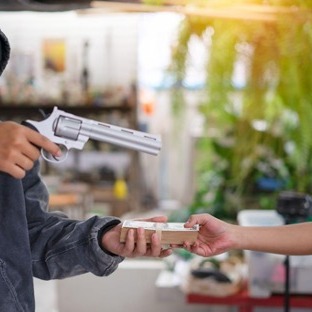Making a Plan to Increase Retail Safety: How Can Key Control Help

As a retail organization, your employees and customers are your most important asset. In the fast-paced world of retail, ensuring the safety and security of employees is paramount. With numerous customers, high-value merchandise, and various operational complexities, retail environments can present unique safety challenges. It's crucial for retailers to develop a comprehensive plan to protect their employees. With the rising threat of active shooters and workplace violence in recent years, protecting employees and safeguarding them from harm has become a top priority for asset protection managers. In response to this heightened concern, many organizations are proactively seeking ways to enhance their security measures by creating safe rooms in each of their multi-site locations. In this article, we will discuss these essential elements of safeguarding employees in the dynamic realm of retail:
Make an Exit Plan
Creating a well-defined exit plan is essential for emergency situations such as fires, natural disasters, or other threats that require a quick evacuation. Key steps to consider when making an exit plan include conducting thorough site assessments, identifying primary and secondary exit routes, clearly marking evacuation paths, ensuring emergency exit doors are easily accessible and functional, and conducting regular drills and training sessions to familiarize employees with evacuation procedures. An effective exit plan ensures a swift and organized response during emergencies, reducing the risk of injuries and ensuring everyone's safety.
Have a Safe Room
Safe rooms serve as designated areas where employees can seek refuge during emergencies, particularly in situations involving an active shooter or workplace violence. These rooms are equipped with reinforced doors, communication systems, and essential supplies to provide a secure space until authorities arrive or the threat is neutralized. When establishing safe rooms, retailers should conduct risk assessments to identify suitable locations, reinforce the room's structure and entry points, install panic buttons or communication devices, and train employees on their proper usage. Safe rooms offer a vital layer of protection, allowing employees to shelter in place and increasing the chances of survival in critical situations. Here’s what your safe room needs to protect your employees and customers.
Have a Robust Key Control Program
Implementing a robust key control program is crucial for maintaining security within retail establishments. It involves systematic management of keys to prevent unauthorized access, minimize the risk of theft, and protect sensitive areas.
Key control programs should include the use of restricted keys that can't be duplicated, cloud-based key tracking software, and locks that can be rekeyed in a matter of minutes.
Make sure you establish clear policies and procedures for key issuance, access control, and inventory management. By maintaining strict control over keys, retailers can mitigate security risks, prevent internal theft, and ensure that only authorized personnel have access to specific areas.
Prioritizing safety not only provides peace of mind but also fosters a positive work environment, instills trust among stakeholders, and contributes to the overall success of retail establishments. If you're ready to increase the safety of your retail organization, talk to the experts at InstaKey and learn how we can improve your key control program.




